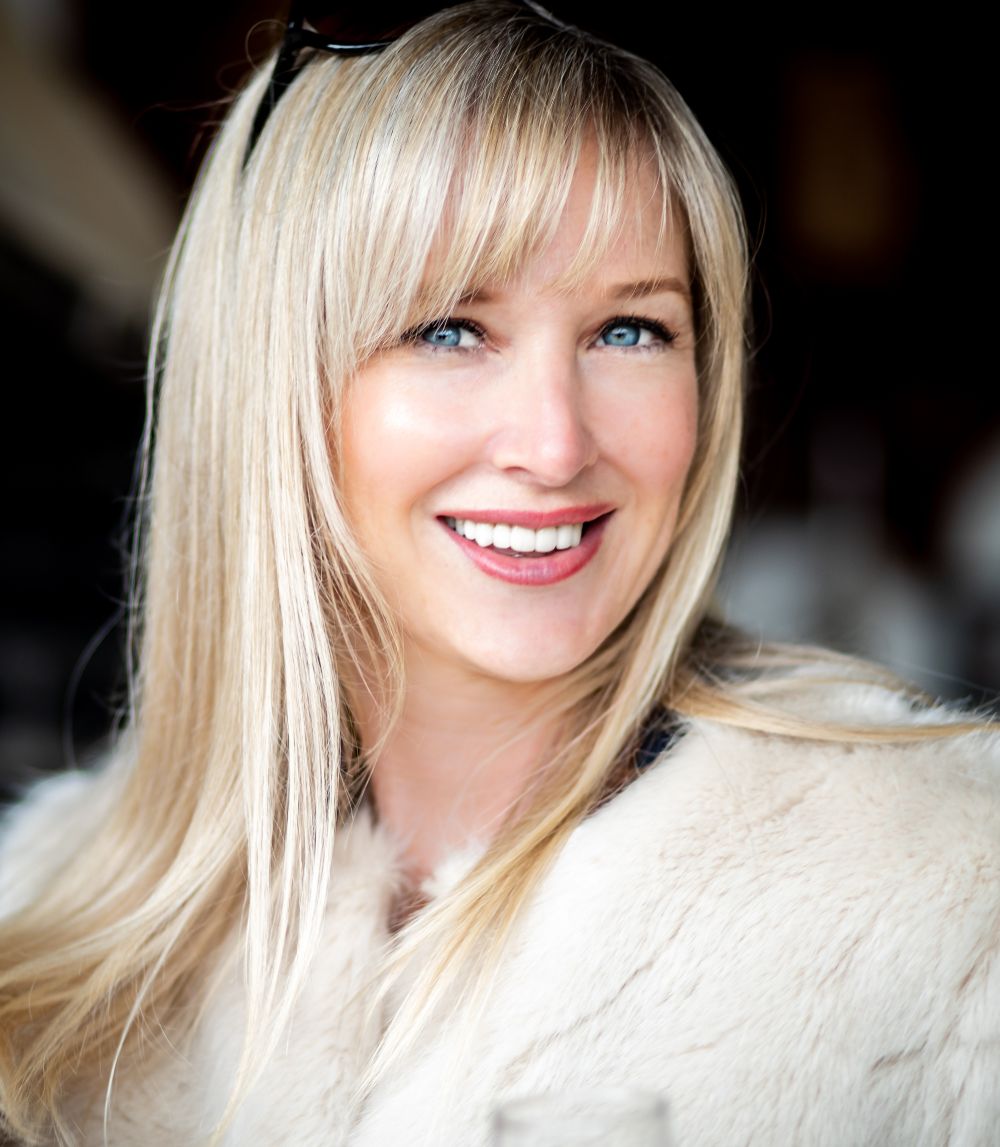How Gymshark took on 2020 and won (with consumer research)

Learn how fitness unicorn Gymshark tackled plunging purchase intent as coronavirus closed gyms in key markets.
It reached coveted unicorn status this summer, hitting a $1.3 billion valuation, but only months earlier, Gymshark made a “worrying” discovery, which could have jeopardized the fitness brand’s success.
Lorna Phillips, audience insight manager at Gymshark, explains that after running consumer research on Attest in April, they found that over 50% of their target audience planned to spend less on fitness clothing as a result of the coronavirus pandemic.
“For us as a brand that’s devoted to the gym and a retailer of fitness clothing, seeing that stat was quite worrying,” she admits.
When lockdown restrictions saw gyms shut down and people told to stay at home, Gymshark realised they needed market intelligence to understand what to do next.
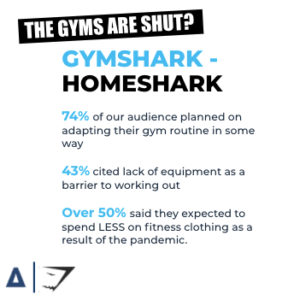
“Lockdown was a massive shock for us and it prompted us to act really quickly; get our finger on the pulse and understand how our audience’s behaviours, their attitudes and priorities were about to change as a result of what’s going on in the world.”
Thankfully, other insights to come out of the research, which Gymshark conducted on Attest, offered a glimmer of hope – highlighting areas where the brand could support customers.
“A large proportion of our audience planned on adapting their gym routine in some way but they weren’t sure how. Lack of equipment was a real barrier.”
Gymshark immediately set about adapting their content marketing, launching Gymshark dailies; a daily email covering topics like home workouts, nutrition ideas and mental wellbeing activities, which helped to see their customers through lockdown.
Finding a way forward post-lockdown
As restrictions started to ease and gyms began reopening, Gymshark conducted another large piece of research – surveying 3,000 gym-goers aged 16-39 in the UK, US, Canada and Germany.
“Attest has been key in keeping us up to date,” says Phillips. “When we compared both surveys, past and present, we started to see some really key themes emerging which have been really important for us to explore further as we navigate to the end of this year and start thinking about our plans for next year.”
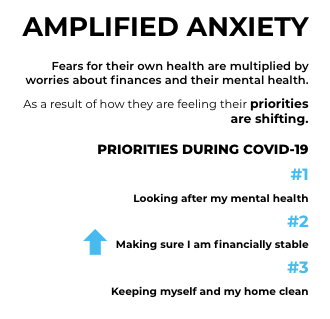
What most surprised the team at Gymshark’s HQ was that a third of the brand’s gymgoing audience (whose gyms were open) hadn’t returned to the gym.
“The biggest reason for this is that they’re anxious about catching covid,” she explains. “We had assumed, as a gym brand, that people would be desperate to get back to the gym, chaining themselves to the door and all that, but actually that just wasn’t the case.
“There’s this huge sense of amplified anxiety with our audience. Not only are they fearful for their health, but there are lots of other things that they’re anxious about as well at the moment.”
The study found that fitness had taken more of a backseat, while financial stability had moved up in priority and mental health topped the list. Understanding this shift in priorities is helping Gymshark find ways to support people in other aspects of their lives. In June, the brand launched Deload, a mental health platform.
“Now we know how important mental health is to our audience, we’re really championing that platform. We’re learning from our audience about the topics they’re concerned about and making sure we talk about them. We know that some of this might not be profitable for us, but we know that this is also what people really appreciate at the moment and that’s how we can build loyalty in the long term.”
#WOFH (workout from home) is here to stay
A crucial part of Gymshark’s consumer research has been trying to anticipate which behaviours might become long-term trends. Gym closures forced people to find new ways to exercise, and this has changed people’s routines – in turn, it’s changed what they want from brands.
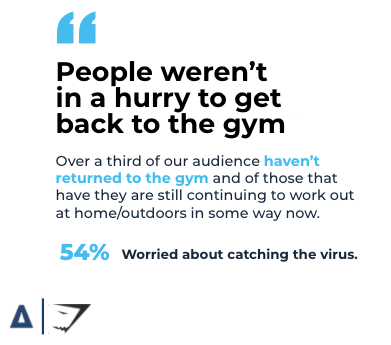
“Even those people who had gone back to the gym, were still working out at home in some way and wanted content that reflected this,” says Phillips. “When we asked about the things people were looking for, it was bodyweight exercises, exercises that can be done in small spaces and workouts using general household items. It’s that kind of thing that’s reinforcing that home workouts are here for a while.
“For us, this has really meant a bit of a rethink about our content. We’ve been predominantly focusing on more gym-based content since the restrictions were lifted, but we can see from the research that’s not what they want.”
Now, Gymshark aims to offer education to empower people in this new way of training, while they’ve also adapted their products and offers. And while people might be going to the gym less, Gymshark has recognised that that doesn’t have to lead to less demand for their clothing.
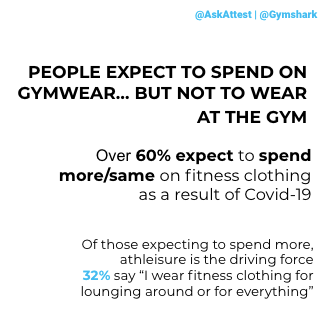
“We learned that over 60% of people still expect to spend the same or more on fitness clothing in the coming months than they would have before this had all happened. When we dug into the data, the driving force behind those wanting to spend more money is tied to the athleisure trend.
“There is a need to feel comfortable, now more than ever. This gives us something to think about in the way that we frame our products – so thinking not only about the functional aspects but also the emotional benefits; the comfort that our products bring. What does that mean for our ‘rest day’ proposition and what that looks like?”
Guiding long-term strategy
Phillips is the first to admit that 2020 has been “challenging” for Gymshark, yet through consumer research, the company has discovered opportunities that have brought them closer to their audience.
“It’s helped us show that we actually really give a shit about our customers and it’s not just about selling leggings. We’ve been able to provide tools to empower them and adapt to this new normal through the things we’ve introduced like free content, education, ways for them to connect and even earn money through the PT initiative we’ve launched, offering an hourly rate to host online workouts.”
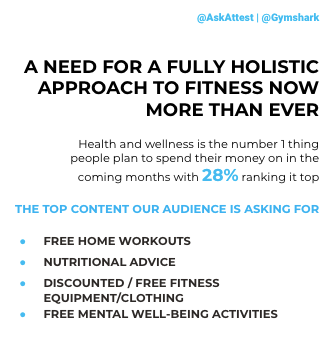
Gymshark now hopes to dig deeper into some of the emerging trends they’ve identified, such as a desire to achieve holistic wellbeing.
“We’re seeing this all-encompassing approach to fitness through the things people are asking for and the things they’re prioritising, she explains. “We learned that health and wellness is the number one thing people expect to spend money on in the coming months and I’d really like to understand what exactly that includes.”
Looking to the future, Gymshark intend to continue conducting consumer research, helping to shape their long-term strategy.
“The research we’ve done has really enabled us to make data-driven decisions and it’s helped us to think long term,” says Phillips. “We’ve seen just in the last six months, how much the way people feel and how they behave has changed and it’s important for us to monitor this in future through agile research solutions if we want to stay meaningful and relevant.”
Does your brand need to stay meaningful and relevant in 2021? Chat to us today to find out how easy it is to get the data you need.
Tell us what you think of this article by leaving a comment on LinkedIn.
Or share it on:
